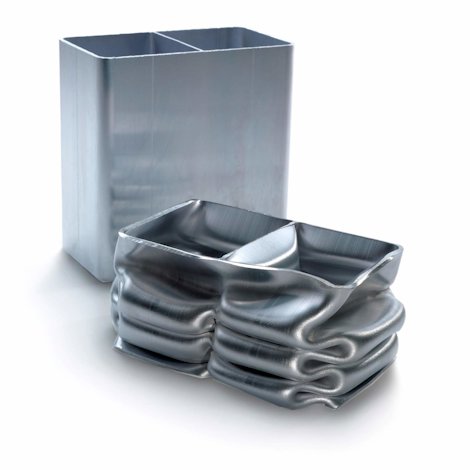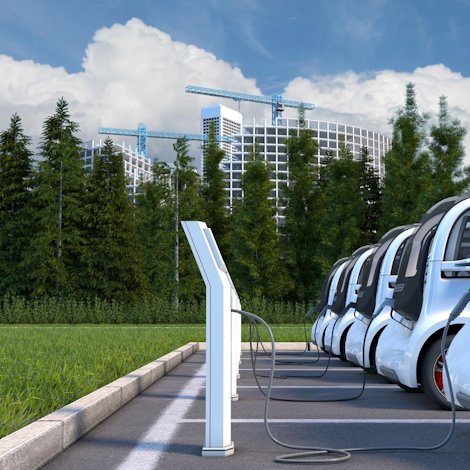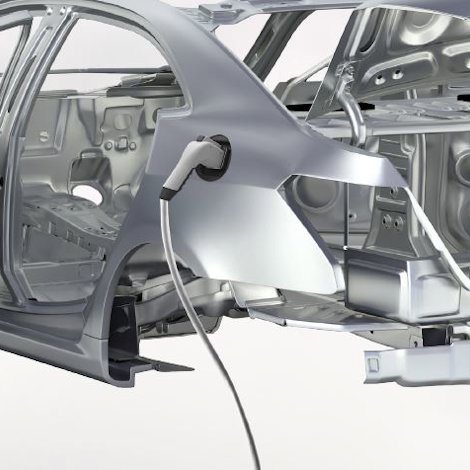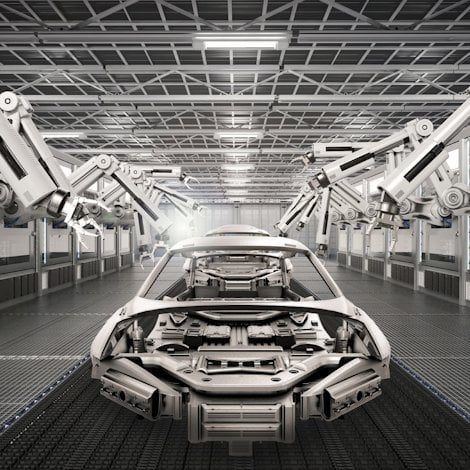How HyperAl technology can lift the extrudability of high-strength automotive aluminium extrusions
Automakers who use aluminium extrusion-based solutions for their applications normally select 6xxx-series alloys due to the combination of mechanical properties, extrudability, corrosion resistance and recycling friendliness. However, the extrudability of high-strength 6xxx-series alloys can become an issue, and for 6xxx-series alloys that provide yield strength levels above 300MPa, low extrudability significantly increases production costs. I would like to introduce a novel method as a possible solution.
A novel method for producing high-strength extruded profiles has been developed and implemented in production of a rear spring link for a battery-electric vehicle that is going to be hitting the market in 2025. This method, with the brand name HyperAl, is based on a high-strength 6xxx-series aluminium alloy and a new thermal treatment process for the billets.
The beauty of HyperAl is that you can increase extrusion speed by 150-to-200% as compared to standard processed billets – and still obtain the same or higher strength level in the final product. And that is not all.
Raufoss Technology in Norway, and Hydro – the company I work for – have collaborated in optimizing the alloy and the processing from the cast billets to the end product. This 6061 HyperAl alloy has a low-carbon footprint with reduced processing cost in extrusion, and it offers better formability and attractive properties when compared with standard alloys.
Using soft annealing as an alternative to overheating
Extrudability, which is the maximum extrusion speed that can be applied before tearing occurs, is one of the most important factors affecting the cost and efficiency of the extrusion process.
The reason for the reduced extrudability for the higher strength 6xxx-series alloys is a combination of more alloying elements in solid solution and dispersoid particles that contributes to increased deformation resistance and a lowering of the eutectic temperature caused by increased levels of alloying elements.
One way to improve 6xxx-series alloy extrudability and mechanical properties is to use overheating where the billet is heated to high temperature and then quenched to normal billet temperature just before extrusion. This process was patented in 1986 and presented two years later at the International Aluminum Extrusion Technology Seminar. Today, many automotive extruders are using the process, mainly to produce high and consistent mechanical properties.
Another possibility to increase the extrudability of high-alloyed 6xxx-series alloys is to do the opposite of overheating, namely, to perform a soft annealing process of the billets where the Mg2Si particles are precipitated to reduce the number of elements in solid solution. Magnesium (Mg) in solid solution has a strong effect on the deformation resistance, whereas silicon (Si) has a minor effect on the deformation resistance.
A separate solutionizing process of the extruded aluminium profiles
A typical soft annealing of a 6xxx-series alloy is done at a temperature between 350°C - 450°C for four-to-eight hours. By keeping a low preheating temperature of the billet, it is possible to retain the Mg2Si particles during extrusion and reduce the deformation resistance. The downside of this is that there is a need to perform a separate solutionizing process of the extruded profiles afterwards, but in some cases this can be an advantage.
Best choice is aluminium alloy 6061
To obtain maximum extrusion speed for soft annealed material it is important to have a material that has the lowest possible deformation resistance and the highest possible eutectic melting temperature. The gain in extrusion productivity and other possible benefits must outweigh the extra cost of doing both the soft annealing of the billets and the separate solutionizing process for the extruded profiles.
We believed aluminium alloy 6061 would be the best choice for the proposed process, including soft annealing of the billets. To verify our hypothesis, we conducted lab extrusion trials with both 6082 and 6061 alloys. Billets were soft annealed by a slow cooling from the homogenizing temperature of 550°C down to 350°C and held there for eight hours.
The results? With the HyperAl 6061 alloy:
- The number of dispersoid-forming elements is low, and the extrusion speeds are high
- The extruded profile has a fully recrystallized and fine-grained structure
- One can extrude 150-to-200% faster than with the 6082 alloy
Another benefit with the HyperAl material is the profile quenching at the exit of the extrusion press. Since it is going to be separately solutionized afterwards, one does not have to care about fast cooling of the profiles to get good mechanical properties, only to get it cooled enough before being stretched. With HyperAl, you can probably save about one meter of the back end of the profile as good material.
Spring links of 6061 HyperAl material with mechanical properties similar to the 6082 in production were tested in the test rig for this part. For the 6082 spring links, the average number of cycles before failure is 93,000 cycles, whereas the 6061 HyperAl spring links lasted 122,000 cycles before failure.
The HyperAl 6061 parts were also tested for intergranular corrosion properties according to ISO 11846:1995 Method B. The results showed that the average of the three deepest corrosion attacks were 192µm, which is well below a typical requirement of 300µm, which many of the OEMs set as a maximum limit.

HyperAl extruded profiles for more automotive parts in years to come
One of the clear advantages for the 6061 HyperAl material and the separate solutionizing process is the mechanical properties and the formability in the W-temper, which is directly after solutionizing. The low yield stress of only 60MPa ensures that the forces needed and that the springback after forming are low, and the high work hardening rate that is beneficial for the formability.
In combination with the 6061 HyperAl material in the W-temper, the low yield stress will require low forces and give low springback, and it would be possible to achieve extremely good dimensional tolerances.
Our conclusion is that the combination of attractive mechanical properties and good dimensional tolerances could open the possibility of using HyperAl 6061 extruded profiles for a lot of automotive parts in the years to come.








